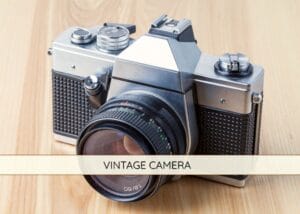While many thought that those heavy and old film cameras would go out of fashion with digital ones, they’ve made a comeback instead! And with even more value. An original Leica M3 model recently sold for an exceptional price of almost $11,000!
So, if you received an old vintage camera from your father or grandfather, this guide is what you need! It will help you find out if your camera’s authenticity, value, and rarity, along with showing some rarest cameras you’d want to know about!
Why Are Vintage Cameras Collectible?
Photography started with the Camera Obscura in the 1550s and progressed to the first permanent images in the 1820s. But how cameras were constructed changed forever in 1888 with the arrival of George Eastman’s Kodak, with simple box cameras and roll film.
It not only made photography easy but also accessible to regular people rather than just professionals. Post-World War I, German makers (like Leica and Zeiss) led the development with high-precision 35mm format. More innovation in cameras brought better picture, mobility, and optical quality.
The interest of collectors is towards old cameras due to their construction and vintage appeal. They have better mechanical construction from the pre-digital days and traditional optical lenses, which are fascinating. Besides, many old cameras are still functional, letting collectors use them!
5 Steps to Identify Authentic Vintage Cameras:
Before heading to find the value of your old camera, you need to identify whether or not you have an authentic model. Doing so requires learning beyond the surface model name to a careful inspection of every mark, number, and component.
1. Check the Type:
The first step to spotting a genuine old camera is knowing its type. The earliest cameras were those big “Box Cameras” that ruled in the late 19th and early 20th centuries. They often came with a fixed lens and shutter.
After this, the types kept evolving:
| Camera Type | Key Features | Top Examples |
| Folding Cameras(1900s – 1950s) | Featured a bellows between the lens & film | Kodak, Agfa, Zeiss Ikon |
| 35mm Rangefinders(1930s – 1960s) | Quiet, precise lens with sharp focus. | Leica M series, Nikon S series, Contax |
| TLR – Twin Lens Reflex(1920s – 2000s) | Two stacked lenses (for viewing & shooting) give square photos. | Rolleiflex (especially 2.8 models), YashicaMat |
| SLR – Single Lens Reflex(1950s onward) | Used a mirror for through-the-lens viewing | Hasselblad 500C/CM, Mamiya 7II, Rolleiflex SL66 |
2. Identify Maker & Model
The next important thing to identify is the maker and model. You can do this by the markings. Check the front or top of the camera; that’s where makers usually stamped their names and model numbers.
If not there, you can look at the top deck near the shutter button, around the lens mount, inside the film chamber, or on the leatherette or carrying handle.
Sometimes the details are engraved, other times it’s raised lettering. In really old cameras, you need to look carefully because wear can make it hard to read.
Also, different companies used distinctive marking styles. For example, German makers like Leica and Zeiss used distinctive script and Gothic letters on older models. Japanese companies, like Canon, Nikon, and Olympus, went with cleaner, modern fonts.
Look for other certain marks, like an engraved “K” for special military contracts or early model names like the Nikon “AP.” They can hint at a desirable, limited production run.
Original documents, like the original box, manual, and warranty card, also offer easy identification of the maker and model. That’s why these accessories bump up the value, too.
3. Note the Serial Number
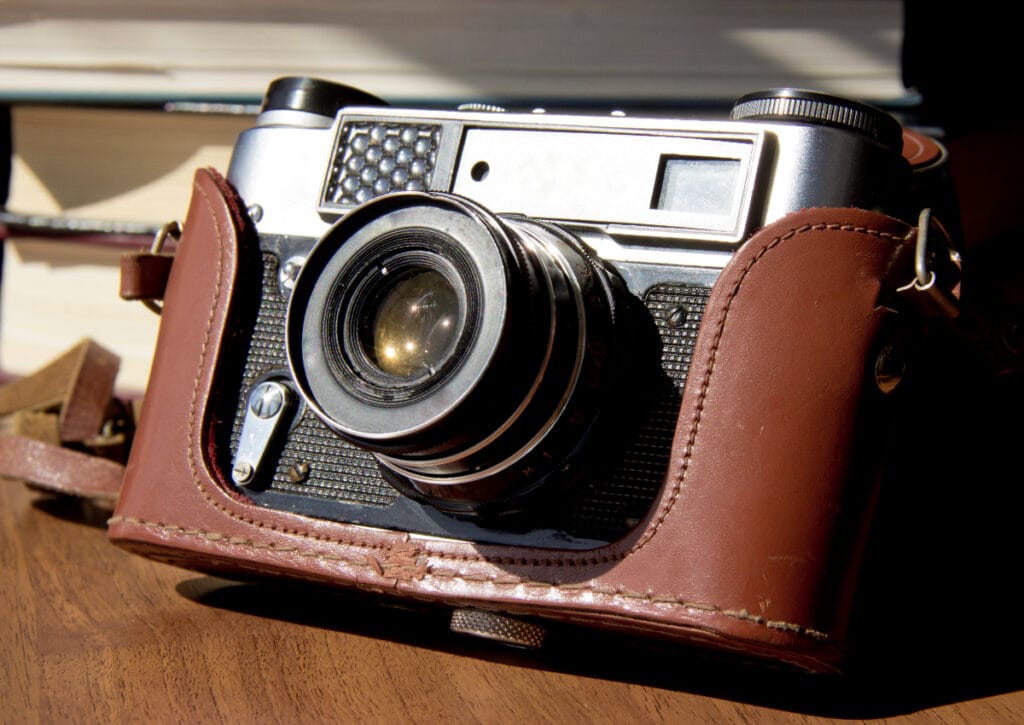
After the brand markings, serial numbers are the more reliable clues for authenticity, production date, and variant. They tell you when your camera was born and if it’s real.
You’ll usually find them on the bottom plate, inside the film compartment, or on the lenses. Besides, every company follows a unique serial number system that will further help you narrow down origins.
Canon’s alpha-numerical date codes, for example, are seen inside the film cartridge compartment. The first letter indicates the year manufactured, and the alphabetic code runs A=1960, B=1961, continuing through Z=1985, then starting again at A=1986. The next two numbers indicate the month, and the final letter is for the factory.
Hasselblad cameras and films bear a two or three-letter code incorporated into the serial number, with two letters indicating the manufacturing year.
You may use online databases to search for the serial number of an old camera to check for authenticity and production years.
4. Check the Lens Details
Don’t overlook the little letters etched on the lens because they reveal a lot about the camera. You can learn about the manufacturer of the lens, the focal length (e.g., 50mm), and maximum aperture (e.g., f/1.8) with these markings.
Note: Prime lenses show a single focal length, while zoom lenses display a range (for example, 28-70mm).
These marks can also differ. Consider the well-known makers Zeiss, Schneider, and Leica. Carl Zeiss Hasselblad lenses show the distinctive T* coating marks for their multi-coating technology. Leica lenses have labels like Summicron (f/2), Summilux (f/1.4), or the classic Noctilux (f/1.2-0.95).
Lenses with fast apertures or those from well-known companies like Carl Zeiss (Planar, Sonnar) or Leica (Summicron, Noctilux) will add extra value to a vintage camera.
5. Assess the Physical Components
In authentic vintage cameras, all the components must be in their specific spots. On a mechanical model, all shutter speeds, especially the slow ones like 1/2 second, must be accurate.
Also, check for pinholes in a cloth shutter by shining a light through the film gate. This is a major issue in many old models.
The focus and aperture rings should turn smoothly without binding or a gritty sensation. Watch for oily aperture blades that usually slow the mechanism. Lastly, inspect the light seals around the film door; gummy or absent seals may need professional clearing.
What Determines an Old Camera’s Worth?
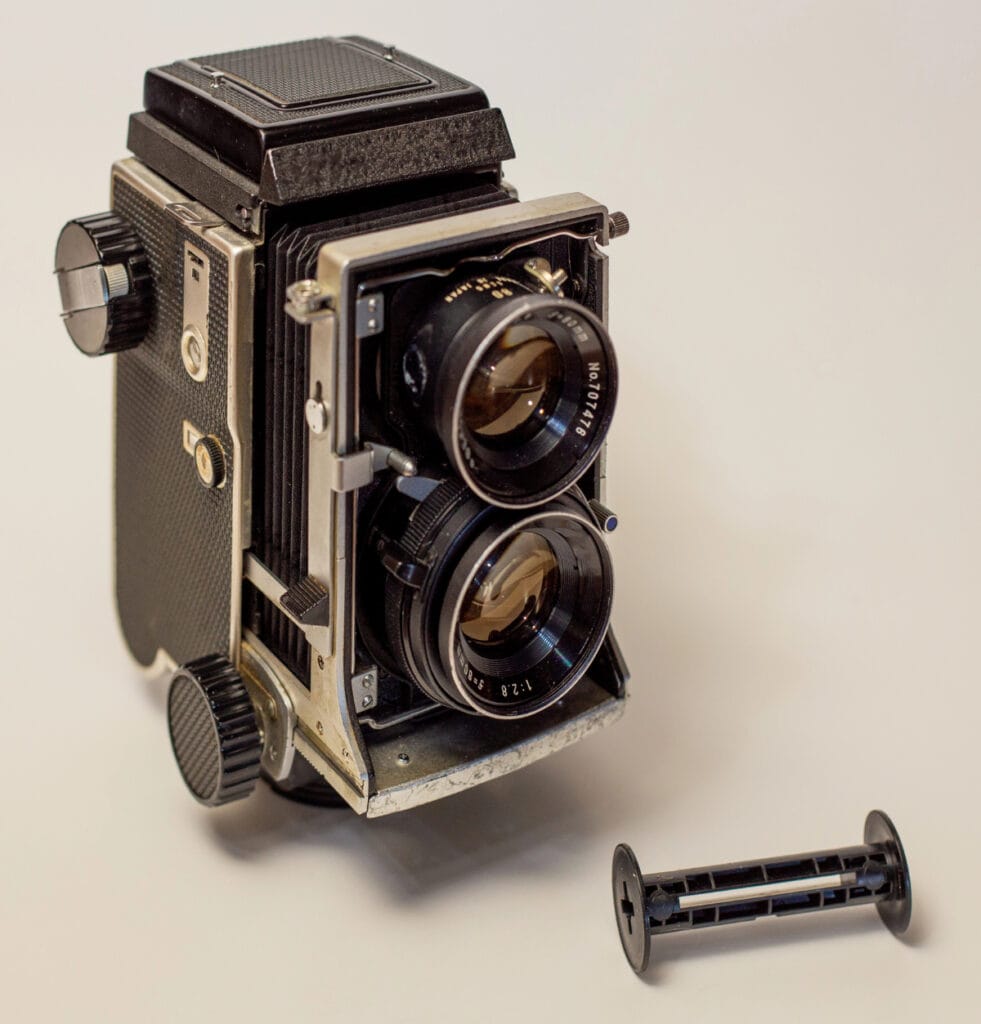
After you’ve confirmed your camera is genuine and know about its origin and specs, you can start with the valuation. The worth normally relies on the brand, condition, and age, but there are several other essential things to keep in mind:
Brand Reputation
The first thing a collector would want to know before buying a vintage camera is what brand it is. And the name significantly impacts the values.
Famous brands known for their unmatched quality, like Leica, Hasselblad, Rolleiflex, Canon, Nikon, Kodak, and Contax, are some of the most desirable names for vintage cameras. Especially the rare models from these names can bring thousands of dollars!
Rarity & Uniqueness
After the maker’s name, the value relies largely on how rare the model is. Rare and hard-to-find models from a brand can be $10-$40 more valuable than its other common models. Here’s what indicates the rarity of an old camera:
- Limited Production: Early prototypes or small initial batches of a line are always rare and valuable. For example, the Rolleiflex SL2000F line had only 130 units, making it the rarest non-special Rolleiflex edition ever.
- Special Editions: Models made from commemorative models, prototypes, and cameras made for specific markets or events command high values. The 1977 Polaroid OneStep Sonar Gold (with 24-carat gold plating) made for Polaroid’s 40th anniversary, is a good example.
- Special Variants: Models that feature rare factory colors, unusual materials like titanium, or military contract stampings are also considered rather rare and valuable.
- Historical Provenance: Verifiable history of ownership by a famous photographer or confirmed use during a historical event, like a specific Hasselblad body used in space.
In a nutshell, if a camera is difficult to find for any reason, collectors tend to pay more!
Condition & Functionality
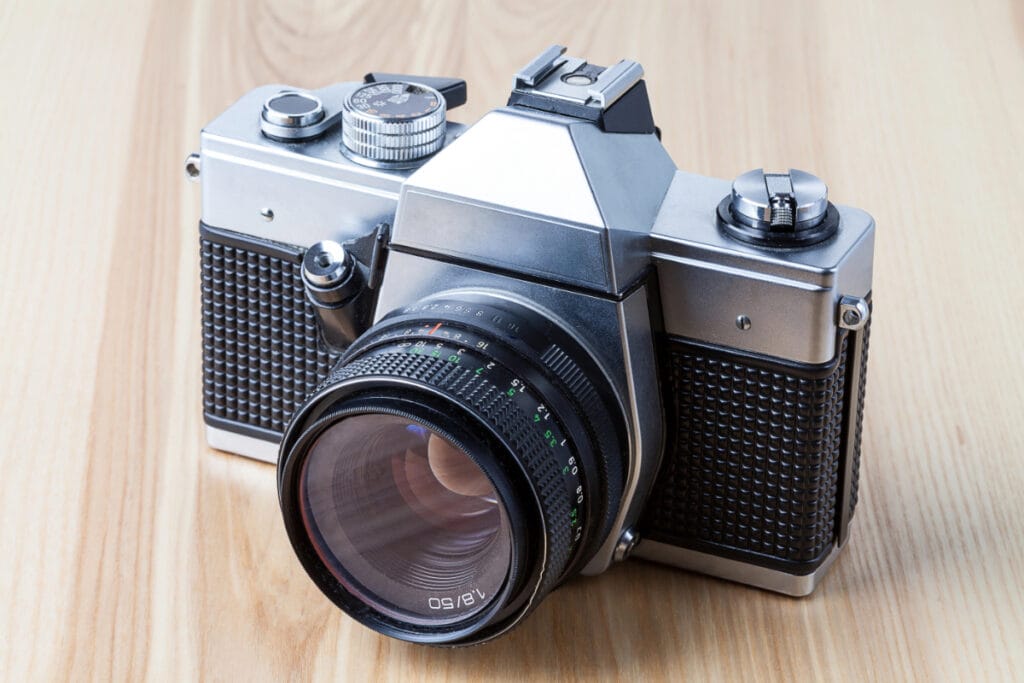
The value of a vintage camera is quite sensitive to its condition. You can examine the condition by looking for the following damage:
- Dents and scratches (Body/lens)
- Finish loss
- Cracked or missing lens
- Fungus or haze in the lens
- Broken or loose shutter
- Faulty film loading mechanisms
- Worn-out leather/grip
Cameras are also professionally graded for their condition, from “Mint” (no defect) to “Excellent,” “Good,” “Fair,” and “Poor.” Clearly, Mint and Excellent models are worth way more than examples graded below them.
For many valuable models, functionality is extremely important because many collectors are also shooters who actually want to use the camera. So, a model must be in full working order with all accurate shutter speeds to be valuable.
Also, cameras that use modern film formats, specifically 35mm and 120 medium format, hold higher and more stable value than those that require defunct or specialized film types (because they’re harder to find).
Accessories and Documentation
As I already said above, the original additional accessories and documentation of a camera play a huge role in its final value. A branded camera with its original box may be more valuable than the same model without a box or documents.
So, look for the following items before buying (or selling) an old camera:
- Original boxes (in good condition)
- Original lens caps and hoods
- Cases and straps
- Instruction manuals
- Other additional accessories
10 Rare & Valuable Vintage Cameras Worth Finding Now!
Let’s discover some of the highest-selling vintage cameras with easy tips to identify them in any collection!
1. Leica M3 (1954)
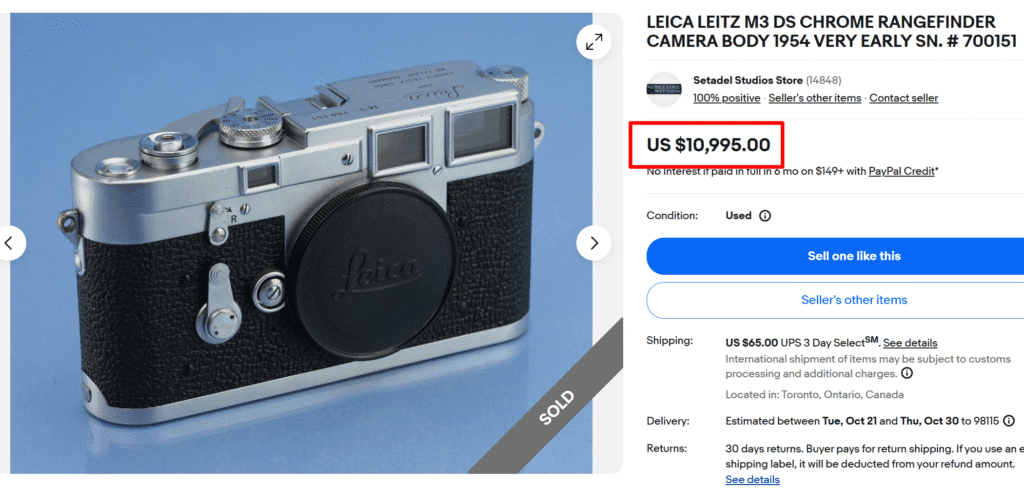
This is the camera that changed photography when it launched in 1954. It’s an early double-stroke variant with Leica’s brightest-ever 0.91x viewfinder, ideal for 50mm to 135mm lenses. It combined the rangefinder and viewfinder into one window for the first time, making focusing way easier.
M3 was a big hint, and the company sold over 220,000 units before 1967. The popularity of this model can make it sell for $5,000 to $10,000+ (based on condition and completeness).
2. Hasselblad 500C Gold Edition (1957)
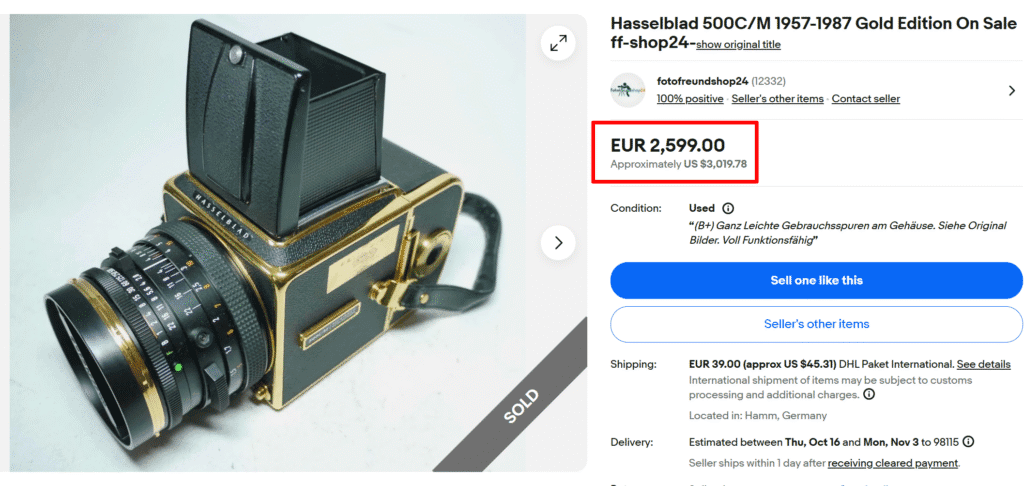
This stunning limited edition Hasselblad model celebrates 30 years of the legendary 500C with only 1,400 models made worldwide. This limited availability makes it one of the rarest vintage cameras, with values going from $2,500 to $5,500 for mint examples.
It has a gold-plated body and a Carl Zeiss Planar 80mm f/2.8 CF lens. This model also featured a part of Hasselblad’s famous V-system, which lets you swap film backs mid-roll, change lenses, and use different viewfinders. A valuable feature!
3. Leica M6 (1984-1998)
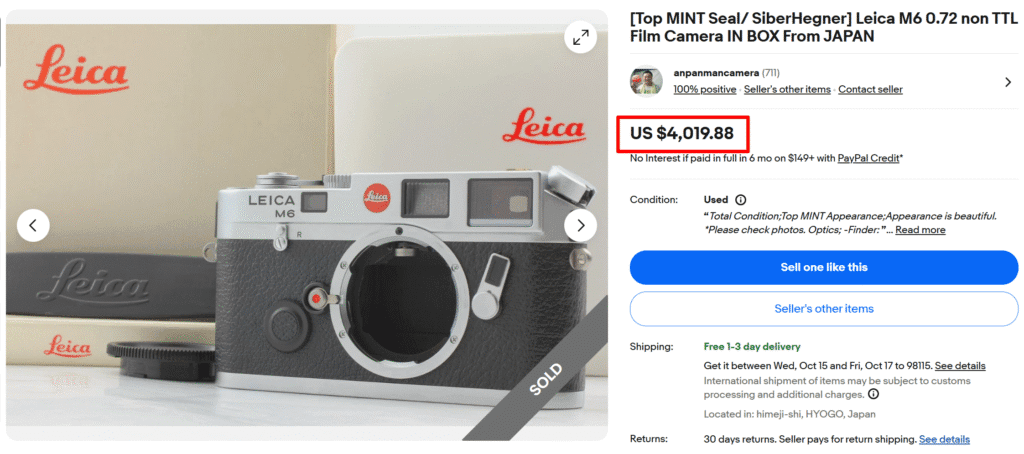
M6 was Leica’s first M camera with a built-in light meter. It was produced from 1984 to 1998. In this model, you’ll find the 0.72x viewfinder that shows framelines for 28mm, 35mm, 50mm, 75mm, 90mm, and 135mm lenses in pairs, making it super versatile.
Besides, it’s fully mechanical, so you only need batteries for the meter, not to take pictures. Examples with clean and intact chrome plating, a clear rangefinder patch, working LED meter arrows, and smooth film advance, you can expect $2,000 to $5,000 for this piece.
4. Mamiya 7ii (1999)
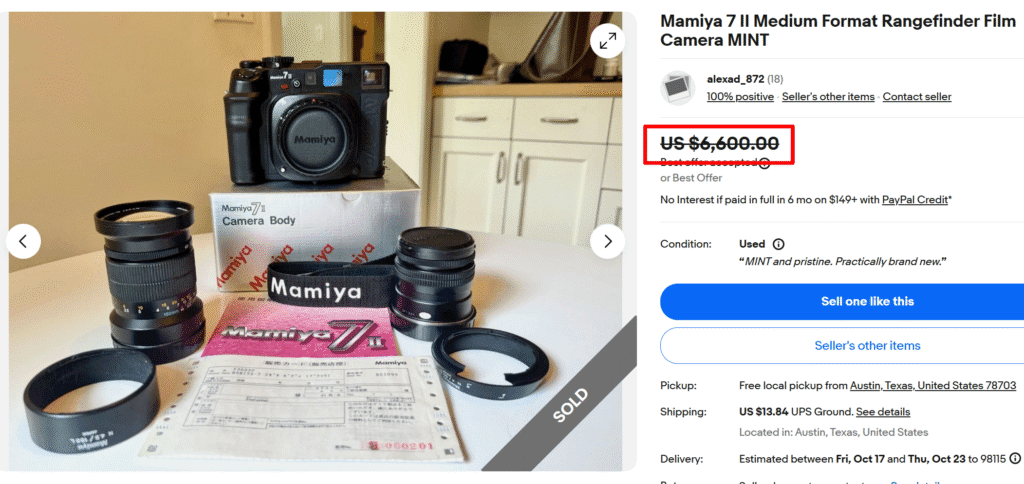
Landscape photographers absolutely love this camera because it’s lightweight but delivers stunning 6×7 images. This portable medium-format camera offers the sharpest interchangeable lenses and the quietest shutter!
You’ll also see a built-in light meter with aperture priority mode, and the bright rangefinder makes focusing easy even in low light. With its original box and complete accessories, a Mamiya 7II can fetch $3,000 to $7,000+ in mint condition.
5. Rolleiflex 2.8F/GX (1960)
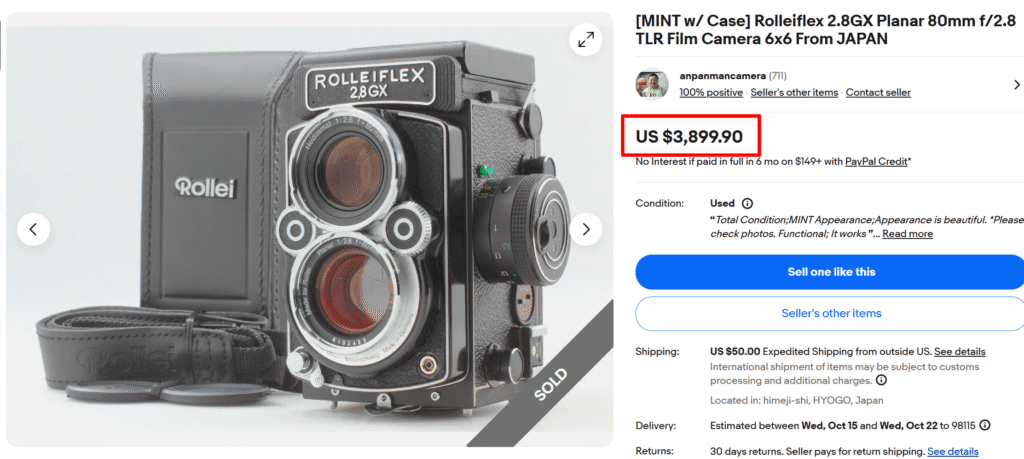
This model is every collector’s dream! This German twin-lens camera is known for its classic Rolleiflex design. It has a Carl Zeiss Planar 80mm f/2.8 lens, which captured clear and vivid photographs on 120 film.
Make sure the viewing screen is bright and clear, the lens is clean, and the shutter works smoothly at every speed. This model usually costs $1,500 to $4,000, depending on condition and extras.
6. Contax G2 (1996)
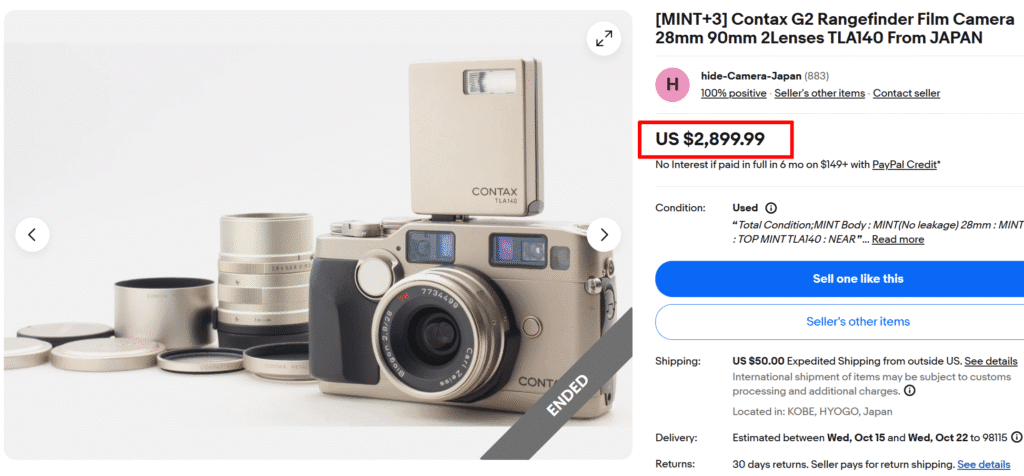
When this titanium beauty came out in 1996, it fixed everything photographers didn’t like about the original Contax G1. The autofocus is incredibly quick and employs two systems to ensure focus even in difficult lighting.
What’s even cooler is that the viewfinder will zoom automatically to whatever lens you attach, so you’re always seeing just what you’re photographing. Furthermore, highly sharp Carl Zeiss lenses and the TLA140 flash are just the thing for great picture quality.
7. Kodak Retina IIIc (1954)
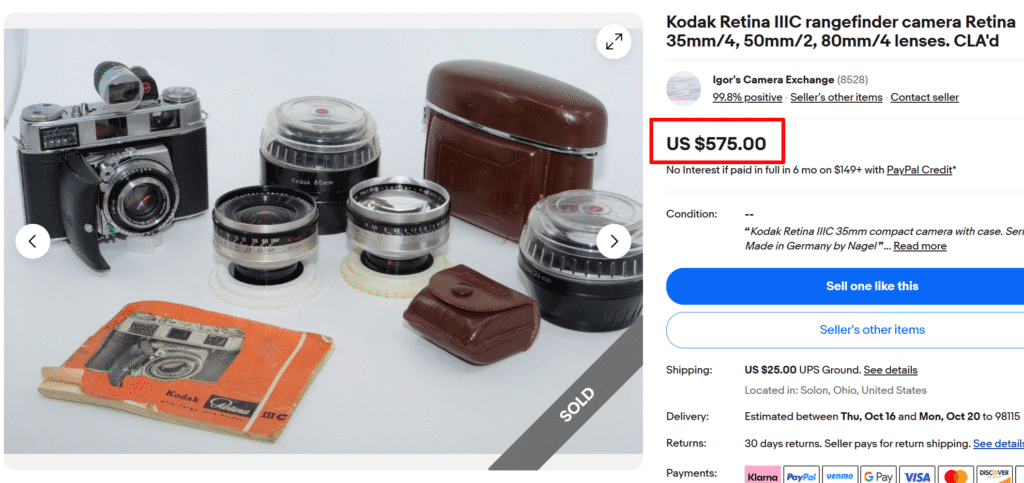
This German-made camera is the last and best of Kodak’s Retina line, produced from 1957-1960. It’s got a unique interchangeable front element system that lets you switch between 35mm, 50mm, and 80mm focal lengths, plus a built-in rangefinder and light meter.
Just make sure the bellows aren’t sticky, the lens serial numbers match, and the light meter still responds to light. Mint or Excellent Retin IIIc models are worth $200 to $700 with the original accessories included.
8. Canon AE-1 (1976)
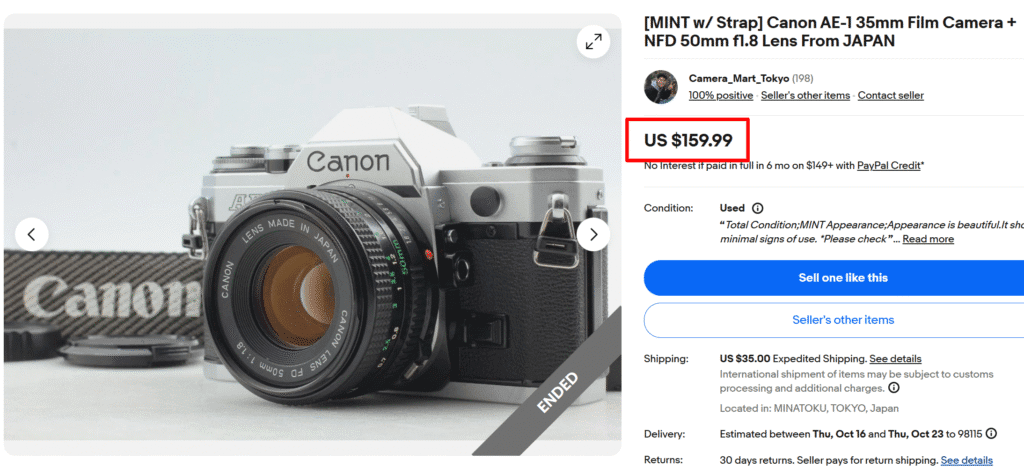
Canon sold more than 5 million of its AE-1 series from 1976 to the mid-1980s and is considered one of the best-selling film cameras in history. It was the first camera that used a computer chip, and that brought the cost down so that everyone could have a good SLR.
It has shutter-priority mode, which allows you to choose how quickly the shutter releases, and the camera will calculate the rest. Its 50mm f/1.8 lens is very sharp and lets lots of light in for indoor or night photography. This camera will be somewhere between $100-$250.
9. Polaroid SX-70 (1972)
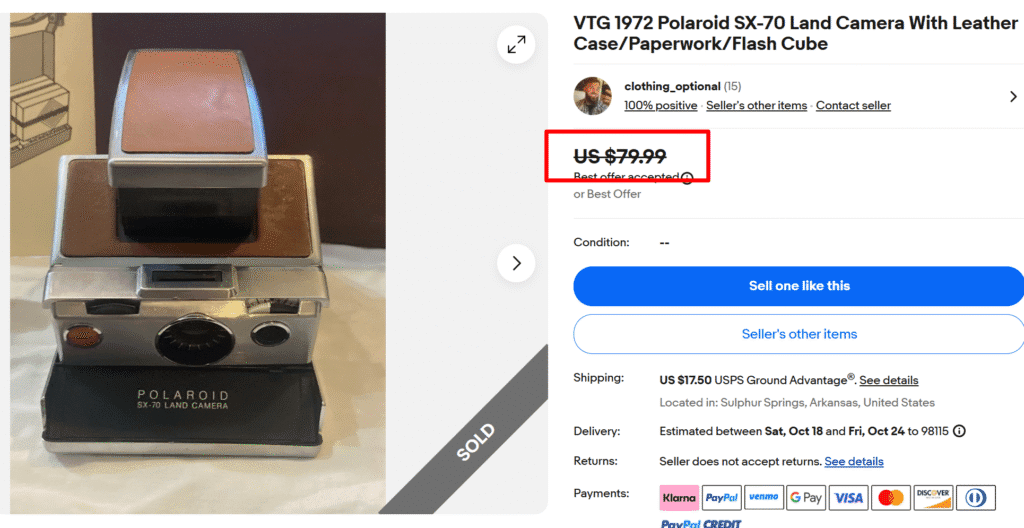
This folding instant camera completely blew people’s minds when Edwin Land pulled one from his pocket in 1972 and shot five photos in ten seconds.. It’s an actual SLR, i.e., you view through the lens itself when framing your shot; something none of the other instant cameras could do.
Besides, the film cartridge comes with its own built-in battery, so the camera never dies during a roll. You get this model with an aesthetic chrome and brown leather look.
But finding compatible films for this model is difficult, so most remain impractical and hence inexpensive.
Note: This article is intended for informational, educational, and entertainment purposes only. Some images are illustrative and may not represent actual brands, products, or related entities. All trademarks, product names, brand logos, packaging, and other intellectual property referenced remain the exclusive property of their respective owners. Any brand mentions or references are provided solely for descriptive and educational context and do not imply any formal or commercial association.

